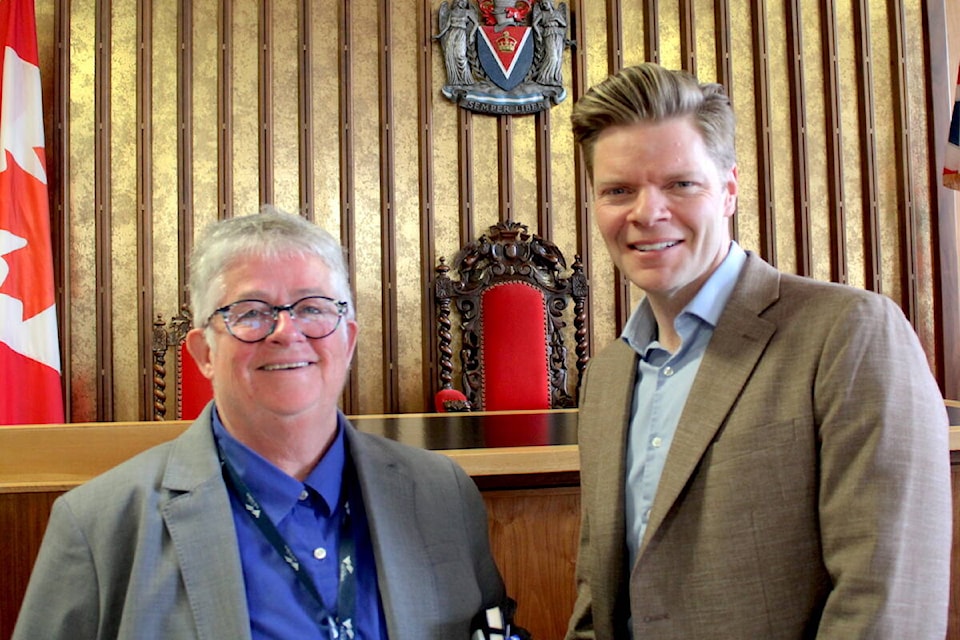Greater Victoria’s most-populated communities are moving forward with studying what their amalgamation could look like and how a decision on joining forces would be made.
Council officials from Victoria and Saanich gathered for a joint meeting Monday (April 3) on the next steps toward convening a citizens’ assembly on the integration question.
Victoria and Saanich residents voted in 2018 to explore amalgamation through a citizens’ assembly before the pandemic delayed the process. Last year, the two municipalities and the province committed $750,000 for holding the assembly, with the costs split evenly among the three parties.
The assembly will consist of 48 randomly selected members split proportionally based on population, meaning Saanich will get six more individuals. Those members would also have to represent different age cohorts, renters, homeowners, First Nations and both rural and urban residents.
The independent assembly will be headed by a third-party consultant. Local councillors voted on Monday to have staff report to their respective councils with information and the next steps before the communities begin the consultant-hiring process.
While the province wants a progress report on a preliminary work plan by the end of 2023, the overall process is expected to take several years.
The assembly offers a chance to look at how local government can best serve the public, the municipal bosses of both communities said in an interview after the meeting.
“I think what we’re looking forward to is a process of allowing the assembly to dig into exactly those questions – where are there opportunities for us to work better together, whether that means operating as a single service provider or if it’s a better, more collaborative or integrated model for service,” Saanich Mayor Dean Murdock said.
“I’m just very pleased that we’re now able to move this forward and respond to that overwhelming desire from residents in both our communities to start this process, to ask those questions, to explore those opportunities.”
The two municipalities represent the lion’s share of the land use decisions on the south Island and are seeing quickly rising populations as they absorb most of the newcomers flocking to the region, Victoria Mayor Marianne Alto said.
“We have a chance here to really look very holistically in the long term about land use and about how residential density changes, how commercial density changes and how we support business in a way that is collaborative and complementary to the residential growth that we’re both experiencing,” the capital city mayor said.
Saanich and Victoria face the majority of the region’s service and land use planning challenges, so Alto said the assembly could help reveal better governance models or efficiencies on how to provide residents with the things they rely on.
READ: Greater Victoria creek could burst with baby salmon any day
Do you have something to add to this story, or something else we should report on?
Email jake.romphf@blackpress.ca
Follow us on Instagram. Like us on Facebook and follow us on Twitter.
